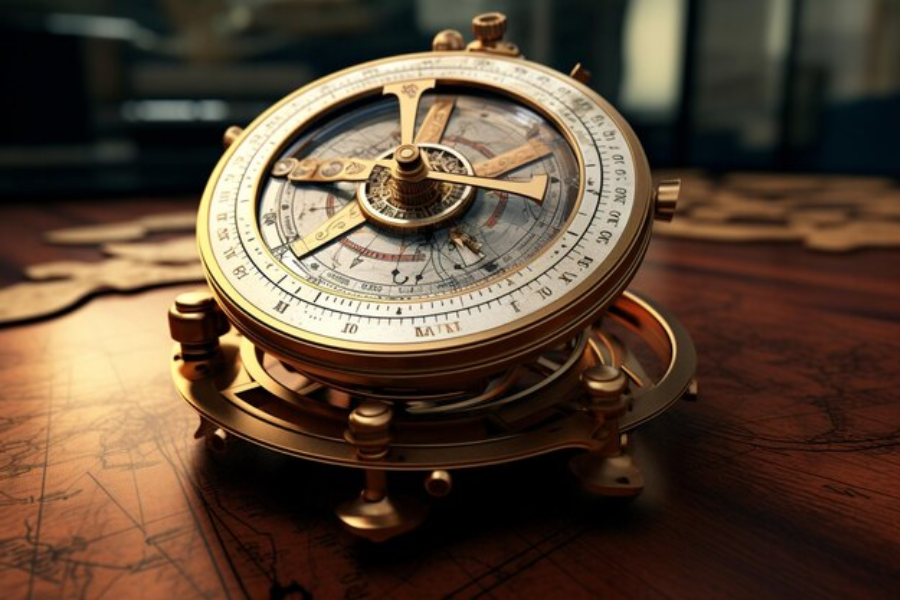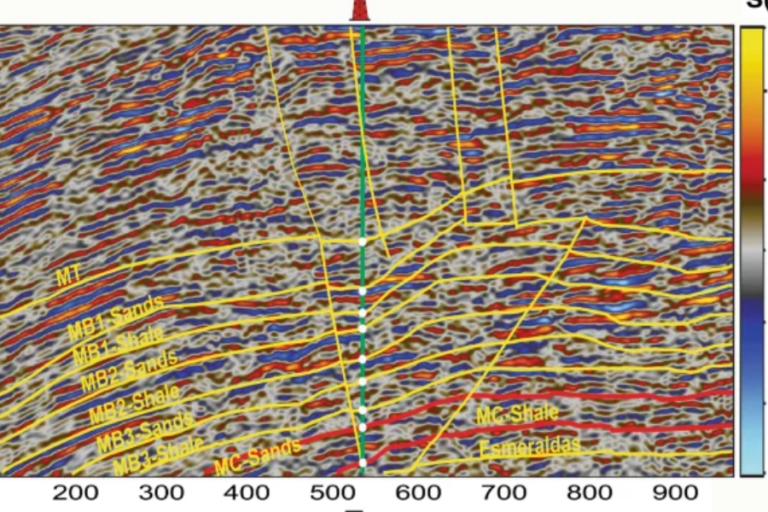Bussola to Measure Angles within a Circle Leonardo Da Vinci
Discovering the Roots of Leonardo’s Bussola
Exploring Leonardo da Vinci’s bussola to measure angles within a circle leonardo da vinci reveals an intriguing fusion of science and art during the Renaissance era. This groundbreaking tool played a pivotal role in the advancement of accurate measurements.
The origin of the bussola can be traced back to ancient civilizations. However, it was Leonardo’s inventive genius that transformed this tool. His meticulous studies in anatomy and geometric shapes demonstrated his deep understanding of precision.
The Early Evolution and Historical Setting
Leonardo’s creation of the bussola emerged in an era where mathematics was gaining prominence. Its early design included several remarkable features:
- Accurate measurement of angles in a circular format
- Application of mechanical design principles
- Use in architectural and engineering planning
Influence of Ancient Tools on the Bussola’s Development
The bussola to measure angles within a circle leonardo da vinci drew inspiration from ancient Greek and Roman devices, but Leonardo’s refinements made it stand out. His detailed notes, particularly in the Codex Arundel, offer insight into the tool’s innovative design.
| Ancient Tool Features | Leonardo’s Bussola Enhancements |
| Basic angle markings | Precisely calibrated measurements |
| Simple angle tracking | Complete circle angle measurement |
| Basic materials | High-quality wood and metals |
The Renaissance Impact on the Bussola’s Design
The Renaissance period was defined by a renewed passion for learning and discovery, and it greatly influenced Leonardo’s approach to the bussola to measure angles within a circle leonardo da vinci. This intellectual climate, along with Leonardo’s studies such as the Vitruvian Man, propelled the compass into becoming a revolutionary instrument.
Mechanical Components of the Bussola Device
Leonardo da Vinci’s compass, or bussola, was a breakthrough in the precision tool industry. Designed with complex mechanics, it could measure intricate geometric relationships with remarkable accuracy.
Key Features of the Bussola’s Design
- A graduated circular arc with precise degree increments
- A movable pointer fixed at a central pivot point
- Strong and durable metal materials for long-lasting use
- Calibration scales for measuring angles accurately
The bussola was equipped with proportional dividers that assisted in detailed geometric calculations. The central pivot played a vital role, allowing users to measure angles in a circular format with high precision.
| Component | Function | Material |
| Circular Arc | Angle Measurement | Brass or Bronze |
| Pivot Point | Rotational Mechanism | Hardened Steel |
| Pointer | Directional Alignment | Polished Metal |
With a measuring range from 0° to 360°, Leonardo’s bussola became an essential tool for scholars, architects, and artisans of the Renaissance.
Relevance of the Bussola in Renaissance Scientific Advancement
While examining Leonardo’s mathematical instruments, the bussola to measure angles within a circle leonardo da vinci stands out as a groundbreaking tool that fundamentally changed scientific practices in the Renaissance. This circular device became integral to advances in both mathematics and design.
Essential Design Features of the Bussola
Leonardo’s mastery in geometric tool-making is evident in the bussola, which was designed with several important elements:
- A central pivot for stable and accurate measurements
- Graduated circular markings for precision
- A movable pointer that allows for detailed angular measurement
- A compact, portable design for ease of use
Mathematical Precision in the Bussola’s Measurements
The bussola demonstrated incredible precision, capable of measuring angles down to fractions of a degree. This was an extraordinary achievement for its time.
| Measurement Capability | Precision Level |
| Minimum Angle | Fractional Degrees |
| Measurement Range | Full 360-Degree Path |
| Pivot Point Stability | High Accuracy |
Integration with Other Geometric Tools
Leonardo’s ingenious combination of the bussola to measure angles within a circle leonardo da vinci with other tools like rulers and calipers further enhanced its usefulness. This combination allowed for more complex mathematical calculations, making it valuable for both engineering and artistic endeavors.
The Interplay of Mathematics and Practical Use
The bussola to measure angles within a circle leonardo da vinci epitomized Leonardo’s ability to merge mathematical theory with real-world applications. It was a crucial part of his work, seamlessly connecting theoretical geometry with practical design.
Leonardo’s Deep Understanding of Geometry
Leonardo da Vinci’s contributions to the field of geometry extended far beyond his contemporaries. His work with tools like the epicicloid compass showed his profound understanding of circular motion and precision.
For Leonardo, geometry was not merely about numbers—it was a language to communicate designs and principles. He employed adjustable compasses and other tools to connect abstract mathematical concepts to tangible results.
- He delved into the dynamics of circular motion.
- He developed innovative techniques for measuring angles.
- He applied mathematical principles to mechanical designs.
The magnetic compass, a crucial component of Leonardo’s toolkit, enabled him to craft precise mechanical designs. His studies went beyond theory—they were designed to bring forth inventions and engineering marvels.
Leonardo’s Vision for Integrating Mathematics with Creation
Leonardo’s revolutionary approach to math and design included:
- A focus on exact geometric proportions
- Cutting-edge measurement methods
- The application of mathematical concepts in practical creations
By combining mathematical precision with creativity, Leonardo redefined our understanding of geometry. His legacy continues to inspire engineers, artists, and scientists, leaving a profound impact on future generations.
Leonardo’s Bussola: Revolutionizing Renaissance Engineering and Architecture
During the Renaissance, Leonardo da Vinci’s bussola to measure angles within a circle leonardo da vinci was instrumental in transforming the fields of engineering and architecture. This innovative tool brought unparalleled precision to building designs, military strategies, and architectural planning. Insights from the Codex Atlanticus illustrate how this device enabled both creative and highly accurate measurements.
Enhancing Structural Design with the Bussola
The bussola to measure angles within a circle leonardo da vinci allowed Renaissance architects and engineers to achieve remarkable accuracy in their work. It was used to:
- Measure precise curves for arches
- Ensure symmetry in structural designs
- Assess load-bearing strengths of materials
- Create geometrically flawless plans for buildings
Military Engineering and the Bussola’s Influence
Leonardo’s influence extended to military engineering, where his measurements enhanced the design of fortifications. The bussola to measure angles within a circle leonardo da vinci was essential for:
- Perfecting wall alignments
- Calculating precise angles for defensive structures
- Strategically optimizing fortifications
The Role of the Bussola in Architectural Innovation
In the realm of architecture, the bussola to measure angles within a circle leonardo da vinci merged mathematics with artistic vision. It demonstrated how geometric principles could inform design, taking inspiration from Leonardo’s iconic Vitruvian Man.
| Design Element | Contribution of the Bussola |
| Symmetry | Accurate angle measurements |
| Proportion | Geometric ratio calculations |
| Structural Integrity | Precision in measurements |
The Renaissance experienced a leap in engineering, largely due to the precision introduced by Leonardo’s tools. This revolutionized how engineers and architects approached complex design challenges.
Leonardo’s Bussola and Its Contribution to Astronomy
As a Renaissance engineer, I discovered how Leonardo da Vinci’s bussola to measure angles within a circle leonardo da vinci revolutionized astronomical observations. This tool played a key role in the scientific advancements of the era.
It was used to track celestial bodies and study the sky’s structure, providing:
- Detailed measurements of planetary orbits
- Accurate angular relationships between stars
- A foundation for future astronomical research
Leonardo’s ability to craft precision instruments was unparalleled. The bussola to measure angles within a circle leonardo da vinci allowed him to:
- Determine exact angular distances between celestial bodies
- Map the positions of stars and planets
- Create mathematical models for planetary motion
| Astronomical Task | Bussola’s Contribution |
| Star Mapping | High-precision angle measurements |
| Planetary Orbits | Angular calculations |
| Celestial Geometry | Innovative geometric techniques |
The bussola to measure angles within a circle leonardo da vinci exemplified the spirit of Renaissance science and paved the way for future astronomical advancements.
The Integration of Geometry and Art in Leonardo’s Work
Leonardo da Vinci seamlessly blended artistic creativity with scientific precision, and tools like the bussola to measure angles within a circle leonardo da vinci played a crucial role in his art. By employing geometry tools such as circular protractors, he infused his works with both creativity and accuracy.
Advancing Perspective in Renaissance Art
Perspective was a cornerstone of Renaissance art, and Leonardo’s use of geometry enhanced its realism. His tools enabled him to:
- Accurately measure angles to create depth
- Incorporate geometric calculations into his compositions
- Integrate math into visual representation for lifelike art
Connection with the Vitruvian Man
Leonardo’s Vitruvian Man is a testament to his profound understanding of geometry. By using advanced mathematics, he represented the ideal proportions of the human body, combining beauty and science in his work.
| Geometric Element | Artistic Significance |
| Circular Proportions | Perfect human symmetry |
| Angle Measurements | Accurate alignment of the body |
| Geometric Grid | Human anatomical structure |
The Vitruvian Man exemplifies how Leonardo used mathematics to capture human proportions, blending exact science with artistic beauty.
Impact of the Bussola on Anatomical Studies
Leonardo’s anatomical studies were greatly influenced by his use of geometry. By utilizing tools like the circular protractor, he was able to depict the human body with incredible accuracy, significantly enhancing both artistic and scientific knowledge of anatomy.
- Detailed studies of muscles and bones
- Precise angle measurements of bodily movements
- A scientific approach to human anatomy
Leonardo’s Bussola: Shaping Modern Measurement Tools
Leonardo da Vinci’s bussola to measure angles within a circle leonardo da vinci has a lasting impact, bridging Renaissance innovation with today’s technology. The precision of this tool influenced the development of modern measuring instruments, maintaining its relevance in contemporary science and engineering.
His studies in angular measurements are the foundation for many modern tools, such as:
- Protractors, derived from the bussola’s angle measurement system
- Compasses that echo Leonardo’s design principles
- Surveying instruments like theodolites, reflecting the bussola’s legacy
The Codex Arundel offers detailed sketches of Leonardo’s designs, showing how his methods continue to inspire today’s engineers, architects, and scientists.
The legacy of the bussola to measure angles within a circle leonardo da vinci stretches from guiding maritime navigation to building architectural marvels. Da Vinci’s invention is a prime example of how art and science intersect to drive innovation, influencing tools that continue to shape modern technology.
The Spirit of Renaissance Curiosity in Today’s Tools
The Renaissance curiosity lives on in modern tools inspired by Leonardo’s bussola to measure angles within a circle leonardo da vinci. These instruments remind us of the genius that lies in understanding the intersection of art, science, and creativity.
Technical Features and Operational Methods of the Bussola
As a researcher studying Leonardo’s inventions, I’ve gained deep insights into the bussola to measure angles within a circle leonardo da vinci, a vital tool used during the Renaissance to measure angles with precision.
The bussola to measure angles within a circle leonardo da vinci featured proportional dividers that ensured unmatched accuracy in geometric measurements. To understand its technical aspects, let’s explore key features:
Calibration Techniques for the Bussola
Leonardo designed special calibration methods to ensure the tool’s precision:
- Positioning the instrument at the exact center of a circle
- Aligning the reference arms with perfect accuracy
- Ensuring the graduated scale was meticulously verified
The Process of Measuring Angles
Measuring angles with the bussola to measure angles within a circle leonardo da vinci followed a systematic approach, highlighting Leonardo’s expertise in mathematics:
- Place the bussola at the circle’s center
- Align one arm with the initial angle boundary
- Rotate the other arm to meet the second boundary
- Read the angle measurement from the scale
Accuracy and Precision Standards
The bussola to measure angles within a circle leonardo da vinci was far ahead of its time in terms of precision. Its ability to measure angles accurately made it indispensable for both engineering and scientific endeavors.
By combining mathematical precision with innovative design, Leonardo created a tool that would influence scientific instruments for centuries to come.
Leonardo’s Bussola and Its Connection to His Broader Innovations
The bussola to measure angles within a circle leonardo da vinci was not just an ordinary tool for angle measurement; it played a significant role in connecting the diverse range of Leonardo da Vinci’s other inventions. This device bridged the gap between his geometric insights and mechanical creations. Research into Leonardo’s work reveals how the bussola to measure angles within a circle leonardo da vinci tied together various aspects of his inventive genius.
Integrating Geometry into Leonardo’s Designs
One of the crucial tools in Leonardo’s arsenal was the parabolic compass, which also tied into his broader creative process. Leonardo applied geometry to various projects, such as:
- Calculating the angles in his flying machine designs
- Developing intricate mechanical systems
- Creating precision-engineered mechanisms
- Studying the interactions of complex gears
Every geometric instrument Leonardo created, including the bussola to measure angles within a circle leonardo da vinci, reflected his deep understanding of mathematics, which he used to translate abstract theories into tangible mechanical solutions.
| Invention Category | Geometric Use | Level of Precision |
| Flying Machines | Wing angle calculations | Highly Accurate |
| Mechanical Systems | Gear alignment | Exact Measurements |
| Architecture | Structural angle design | Perfect Positioning |
Examining Leonardo’s creative workflow, it becomes clear that the bussola to measure angles within a circle leonardo da vinci was far more than a tool for simple measurements. It served as a vital instrument for conceptualizing and materializing geometric relationships, allowing for breakthroughs in both technology and design.
Advancements in Science with the Bussola
Leonardo’s bussola to measure angles within a circle leonardo da vinci significantly impacted Renaissance science, especially in fields such as engineering and mathematics. It represented a leap forward in precision tools, offering unprecedented accuracy for its time and laying the groundwork for future innovations in scientific measurement.
Pioneering Precision in Engineering
The bussola to measure angles within a circle leonardo da vinci marked a milestone in engineering, helping architects and engineers achieve greater precision in their work. It allowed them to:
- Construct more intricate and complex designs
- Build advanced mechanical systems
- Develop detailed plans for architectural projects
With its advanced design, which included an adjustable compass, the bussola to measure angles within a circle leonardo da vinci made intricate geometric calculations more accessible, transforming the way Renaissance engineers approached their craft.
Revolutionizing Mathematical Approaches
The bussola to measure angles within a circle leonardo da vinci also played a key role in the mathematical realm. It empowered mathematicians to:
- Accurately measure circular shapes
- Discover new geometric principles
- Delve deeply into angular relationships
The magnetic compass integrated into the bussola to measure angles within a circle leonardo da vinci provided a means for mapping and comprehending spatial dimensions, offering new ways of exploring geometric relationships.
The bussola to measure angles within a circle leonardo da vinci was not just a tool; it was a gateway to unlocking new scientific knowledge. It represented the intersection of art, mathematics, and engineering, influencing thinkers for generations.
Preserving and Reconstructing Leonardo’s Instruments
Through extensive research and conservation efforts, Leonardo’s scientific instruments, such as the bussola to measure angles within a circle leonardo da vinci, continue to be studied and replicated. The Codex Atlanticus is one of the key sources for understanding the technical details of these devices.
Global museums are actively engaged in recreating Leonardo’s tools. Researchers like Giorgio Strano and Stephen Johnston are at the forefront of these restoration efforts, helping to bring Leonardo’s mechanical genius back to life.
- Museums showcase detailed replicas of the bussola to measure angles within a circle leonardo da vinci.
- Advanced imaging technology is used for digital reconstructions.
- In-depth studies into the Vitruvian Man and geometric devices continue to advance.
Reconstructing these tools follows a meticulous process, including:
- Careful analysis of Leonardo’s original sketches
- The use of advanced 3D modeling technologies
- Precision engineering based on historical blueprints
Experts such as Mara Miniati and Alison Morrison-Low have significantly contributed to this process, helping us understand the true brilliance behind Leonardo’s work.
| Researcher | Contribution | Institution |
| Giorgio Strano | Historical Research | University of Florence |
| Stephen Johnston | Instrument Reconstruction | University of Cambridge |
| Mara Miniati | Curatorial Studies | Istituto e Museo di Storia della Scienza |
These efforts not only preserve Leonardo’s legacy but also inspire modern engineers and scientists. They demonstrate the enduring value of his approach to measurement and geometry.
Leonardo’s Bussola: A Lasting Legacy
The bussola to measure angles within a circle leonardo da vinci stands as a testament to Leonardo da Vinci’s extraordinary talent. It was an innovative tool that embodied the Renaissance spirit of blending scientific precision with artistic expression.
Leonardo’s tool was revolutionary, offering advanced techniques for geometric measurements that would influence generations of engineers and mathematicians. Its significance is seen in how it:
- Pioneered new methods for measuring angles
- Merged artistic principles with scientific methodologies
- Inspired the development of future measurement technologies
The bussola to measure angles within a circle leonardo da vinci represents Leonardo’s unparalleled problem-solving skills, where he combined mathematical theories with mechanical expertise to create something that was both functional and beautiful. It was seen by Renaissance engineers as evidence of human intellect and potential.
| Impact Area | Significance |
| Scientific Measurement | Introduced high-precision angle calculations |
| Engineering Design | Set the foundation for future measuring instruments |
| Artistic Insight | Deepened understanding of geometry in visual arts |
Today, the bussola to measure angles within a circle leonardo da vinci remains a symbol of Leonardo’s visionary genius. It reflects how creative ideas can transcend time and inspire continuous innovation and discovery.
- Purpose and Design:
The bussola to measure angles within a circle leonardo da vinci was a circular tool specifically created for measuring angles with precision. It featured a central pivot, graduated markings, and a movable pointer, allowing for accurate angle measurements.
- Precision Tool:
The bussola to measure angles within a circle leonardo da vinci was highly accurate, offering precision beyond earlier tools of its time. It could measure angles to fractions of a degree, making it a significant advancement in the field of measurement.
- Applications:
Leonardo used the bussola to measure angles within a circle leonardo da vinci across multiple disciplines. It played a role in architectural design, military engineering, astronomy, and even artistic endeavors, such as perspective drawing and anatomical studies.
- Innovative Use of Geometry:
The tool was not just for measuring angles; it reflected Leonardo’s broader use of geometry to solve complex mechanical problems. It helped him in the design of flying machines, mechanical systems, and precise architectural plans.
- Renaissance Influence:
The bussola to measure angles within a circle leonardo da vinci was revolutionary during the Renaissance. It combined artistic precision with scientific inquiry, influencing future developments in engineering, architecture, and mathematical studies.
- Symbol of Leonardo’s Genius:
The bussola to measure angles within a circle leonardo da vinci exemplified Leonardo’s genius for integrating art, science, and technology. It bridged these fields, helping to expand knowledge in both theoretical and practical domains.
- Preservation and Reconstruction:
Although no original examples of Leonardo’s bussola to measure angles within a circle leonardo da vinci exist today, museums around the world feature detailed replicas based on Leonardo’s sketches. Digital reconstructions and 3D modeling have also been employed to preserve the knowledge of this tool.
- Influence on Modern Tools:
The principles behind the bussola to measure angles within a circle leonardo da vinci influenced the design of modern measuring instruments like protractors and compasses. Its accuracy and versatility set the stage for advancements in measurement technologies used today in fields like surveying, engineering, and space exploration.
- Mathematical and Artistic Significance:
Leonardo viewed the bussola to measure angles within a circle leonardo da vinci not only as a tool but as a representation of mathematical harmony. It demonstrated the deep connection between geometry, art, and the natural world, which was a central theme in his work.
- Legacy:
The bussola to measure angles within a circle leonardo da vinci stands as a testament to Leonardo’s impact on scientific and artistic methodologies. Its legacy continues to inspire modern engineers, mathematicians, and artists, showcasing the lasting relevance of his innovative thinking.
Final Thoughts on Leonardo’s Genius and the Bussola
The bussola to measure angles within a circle leonardo da vinci was more than a mere tool. It represented Leonardo da Vinci’s unique ability to combine art, science, and technology into one harmonious creation. Its impact during the Renaissance was profound, influencing areas like architecture, art, and engineering, and its legacy continues today.
The tool’s innovative design, including its ability to measure angles with precision, allowed Renaissance thinkers to create highly accurate representations of the world around them. From the Vitruvian Man to architectural designs, the bussola to measure angles within a circle leonardo da vinci made a lasting mark on multiple fields.
Modern engineers and designers still draw inspiration from Leonardo’s work, seeing how his principles live on in contemporary measurement tools. From surveying instruments to space exploration technologies, Leonardo’s inventions have proven that great ideas stand the test of time.
By examining the bussola to measure angles within a circle leonardo da vinci, we see how Leonardo transformed simple concepts into extraordinary creations. His work continues to remind us that creativity, when paired with scientific precision, can change the world.
Frequently Asked Questions
- What was Leonardo da Vinci’s Bussola?
The bussola to measure angles within a circle leonardo da vinci was a circular instrument designed for measuring angles with precision. It featured a central pivot, graduated markings, and a movable pointer, which Leonardo used for applications in architecture, engineering, and astronomy.
- How was the Bussola different from other tools of the time?
Unlike earlier measurement tools, Leonardo’s bussola to measure angles within a circle leonardo da vinci offered much greater precision, allowing measurements to be made to fractions of a degree. Its compact, versatile design made it suitable for a variety of tasks.
- Where did Leonardo use the Bussola?
Leonardo employed the bussola to measure angles within a circle leonardo da vinci in various fields, including architectural design, military engineering, astronomy, artistic perspective drawing, and anatomical studies.
- Why was the Bussola innovative during the Renaissance?
The bussola to measure angles within a circle leonardo da vinci revolutionized measurement techniques by combining mathematical rigor with artistic precision. Its accuracy and versatility were groundbreaking, and Leonardo saw it as a way to bridge the gap between science and art.
- How did Leonardo use and calibrate the Bussola?
To use the bussola to measure angles within a circle leonardo da vinci, Leonardo would place it at the center of a circle, align one arm with the first angle, and rotate the second arm to meet the second boundary. The scale would then provide the angle measurement, with understanding of geometry being crucial for accuracy.
- What influence did the Bussola have on modern tools?
The bussola to measure angles within a circle leonardo da vinci directly influenced the design of modern instruments like protractors and compasses. Its principles of angular measurement are still integral to tools used in surveying and engineering today.
- Did the Bussola have philosophical significance for Leonardo?
Yes, for Leonardo, the bussola to measure angles within a circle leonardo da vinci was not just a practical tool. It symbolized his belief in the mathematical harmony that exists in nature and human systems, showcasing his deep philosophical understanding of geometry.
- Are there any original Bussolas from Leonardo’s time?
No original examples of the bussola to measure angles within a circle leonardo da vinci have survived. However, replicas based on Leonardo’s drawings are displayed in museums, providing insight into the design and craftsmanship of this remarkable instrument.
Discover the latest news and updates on Prndot!







